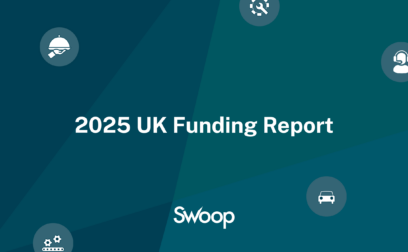TABLE OF CONTENTS
Provide us with your details and one of our insurance experts will contact you to discuss your requirements








Page written by Chris Godfrey. Last reviewed on September 21, 2024. Next review due April 6, 2026.

The easiest way to protect your bottom line is to take out invoice insurance on your unpaid invoices.
With invoice insurance, a business pays a premium to an insurance provider, and in return, the insurer agrees to reimburse the business for a percentage of the unpaid invoice amount in the event of non-payment by the customer. This can help safeguard a company’s cash flow and financial stability, particularly in industries where late or non-payments are common risks.
Invoice insurance, also known as trade credit insurance or accounts receivable insurance, is a financial product designed to protect businesses from losses due to non-payment of invoices by their customers. It provides coverage in case a customer is unable to pay their outstanding invoice due to insolvency, bankruptcy, or other financial difficulties.
Invoice insurance protects you from unpaid invoices (accounts receivable). Let’s say your business has a customer who is unable to pay an invoice. If you’ve insured this invoice against customer insolvency, you won’t incur any financial loss if your customer doesn’t pay you. If your customer becomes insolvent or enters administration, you can usually file a claim for 90% of the invoice value.
This will depend on your insurance provider,; usually you can insure as many individual invoices as you like.
You can think of invoice insurance as a flexible type of trade credit insurance. With invoice insurance you can select only the invoices that you want to insure, whereas with traditional trade credit insurance you generally buy insurance for your company’s entire accounts receivable.
Step 1: Register your details with Swoop.
Step 2: We’ll assess the risk of each invoice and share this with you.
Step 3: You choose which invoices you’d like to insure.
Step 4: The debt will be collected if payment is late.
Step 5: You’ll receive 90% of the value of your invoice(s) if your customer is insolvent.
Your invoices are covered for 12 months from the invoice due date.
You can insure invoices up to £500,000, depending on the risk associated with your customer.
Yes. You can insure pre-issued invoices for up to half of their payment term.
Invoice insurance gives you protection against credit risk – most likely customers being unable to (or refusing to) pay you. Invoice finance is more about smoothing out your cash flow – you are advanced most of the value of an invoice (or all your invoices), in the full expectation that it will be paid. It’s an advance i.e. a debt product. You can of course take out invoice insurance as a bolt-on to invoice finance.
According to the latest figures from the Office of National Statistics, more than 1 in 10 UK businesses are at a ‘moderate-to-severe risk’ of insolvency (August 2022). 22% of businesses surveyed said rising energy costs were their main concern.
Read more: our guide on business energy and how to reduce energy costs.
If a business is insolvent it doesn’t necessarily mean it’s destined for bankruptcy. Insolvency is essentially a state of economic distress, whereas bankruptcy refers to the actual court order that summarises how an insolvent debtor will deal with unpaid obligations. This will usually involve selling assets to pay creditors and erasing debts that can’t be paid.
Chris is a freelance copywriter and content creator. He has been active in the marketing, advertising, and publishing industries for more than twenty-five years. Writing for Barclays Bank, Metro Bank, Wells Fargo, ABN Amro, Quidco, Legal and General, Inshur Zego, AIG, Met Life, State Farm, Direct Line, insurers and pension funds, his words have appeared online and in print to inform, entertain and explain the complex world of consumer and business finance and insurance.
Swoop promise
At Swoop we want to make it easy for SMEs to understand the sometimes overwhelming world of business finance and insurance. Our goal is simple – to distill complex topics, unravel jargon, offer transparent and impartial information, and empower businesses to make smart financial decisions with confidence.
Find out more about Swoop’s editorial principles by reading our editorial policy.
Related pages
Get your free Invoice insurance quote today
Join the 95,000+ businesses just like yours getting the Swoop newsletter.
Free. No spam. Opt out whenever you like.



























We work with world class partners to help us support businesses with finance
Kingfisher Way, Silverlink Business Park, Newcastle upon Tyne, NE28 9NX, UK
View in Google Maps35 Bull Street, Lewis Building, Birmingham B4 6AF, UK
View in Google MapsAberystwyth Innovation and Enterprise Campus
Gogerddan Campus
Aberystwyth University
Ceredigion
SY23 3EE
Dogpatch Labs, The CHQ Building, Custom House Quay, Dublin, Ireland
View in Google MapsSuite 801, Level 8, 84 Pitt Street, Sydney, NSW 2000, Australia
View in Google Maps43 W 23rd St, New York, NY 10010, United States
View in Google Maps21 Dreyer Street, Cape Town, South Africa, 7708
View in Google MapsClever finance tips and the latest news
Delivered to your inbox monthly
Join the 95,000+ businesses just like yours getting the Swoop newsletter. Free. No spam. Opt out whenever you like.
Thanks for requesting a call back
a member of the team will be in touch.




